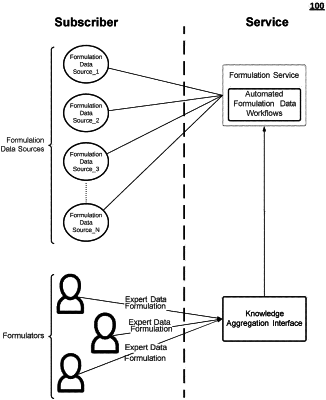| CPC G06F 30/27 (2020.01) [G06F 2111/08 (2020.01)] | 17 Claims |

|
1. A computer-implemented method for accelerating formulation design, the method comprising:
at a remote formulation service that is implemented by a network of distributed computing systems:
generating an unsupervised formulation network model based on applying a probabilistic graphical model over design variable feature data extracted from a corpus of product formulation data;
converting the unsupervised formulation network model to a supervised formulation network model based on setting a formulation outcome for the unsupervised formulation network model;
deriving an outcome-contributory value for each of a plurality of distinct design variables of the supervised formulation network model;
identifying a dependency connection between each of a plurality of distinct pairs of distinct design variables of the supervised formulation network model based on a computation of dependency values between the plurality of distinct pairs of distinct design variables;
computing a strength of connection metric value for each of the plurality of distinct pairs of distinct design variables having the dependency connection, wherein the strength of connection metric value indicates an estimated contribution of a target pairing of design variables toward the value of the formulation outcome; and
generating, via a graphical user interface, a graphical rendering of the supervised formulation network model, wherein the graphical rendering of the supervised formulation network model comprises:
a plurality of distinct nodes representing the plurality of distinct design variables, wherein a display size of each of the plurality of distinct nodes is differentiated based on the derived outcome-contributory value for each of the plurality of distinct design variables; and
a plurality of distinct graphical connections between the distinct pairs of the plurality of distinct design variables, wherein each of the plurality of distinct graphical connections is set based on the identifying the dependency connection between each of the plurality of distinct pairs of distinct design variables, and wherein a display size of each of the plurality of distinct graphical connections is differentiated based on the computation of the strength of connection metric value for each of the plurality of distinct pairs of distinct design variables having the dependency connection.
|